ROOM: The Space magazine is one of the major magazines on space exploration, technology and industry. At ROOM, we share a common goal – promotion of peaceful space exploration for the benefit of humankind, all while bringing you incisive articles on a plethora of contemporary topics. Our authors include researchers and industry leaders from all over the world, which lets us bring you timely and comprehensive information about star magazine online.
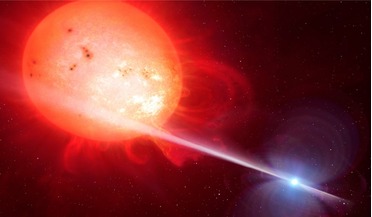 September 2017
Binary stars and their extraordinary lives
September 2017
Binary stars and their extraordinary lives
... them a new lease on life. Other notable oddballs are those that are known as chemically-peculiar stars. These stars are at a stage in their life when they are not expected to have certain chemical elements, such ...hydrogen-rich envelope. If this envelope is removed by binary interactions just before helium ignites, a new type of star called a subdwarf-B star forms. What we see is the exposed, nuclear-burning core of a red giant, and we know this ...
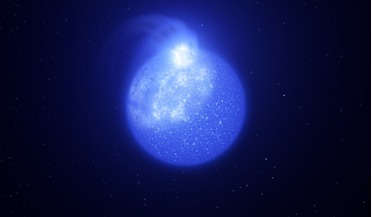 01 June 2020
Giant magnetic spots discovered on small super-hot stars
01 June 2020
Giant magnetic spots discovered on small super-hot stars
... H-R diagram and hence become known as Horizontal Branch stars. One of the hottest variety of these type of stars is an extreme horizontal branch star (EHB star). These small, super hot stars have temperatures of about 25,000 K and are distinguished..., please consider subscribing to ROOM Space Journal to gain immediate and full access to the latest magazine feature articles and receive your own print and/or digital copies of the quarterly ROOM...
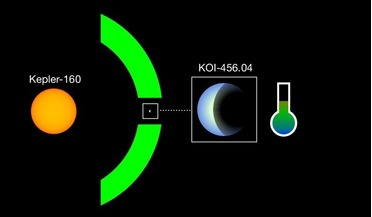 05 June 2020
Exciting exoplanet find around sun-like star
05 June 2020
Exciting exoplanet find around sun-like star
.... And regardless of their mass they also tend to have orbits relatively close in around their respective host stars. This is due to the way we search for exoplanets which preferentially favours the discovery of big planets around... this article, please consider subscribing to ROOM Space Journal to gain immediate and full access to the latest magazine feature articles and receive your own print and/or digital copies of the quarterly ROOM...
 August 2018
Flying to the stars
August 2018
Flying to the stars
... Sirius. When we talk about interstellar travel however, we commonly mean that we can reach another star within an acceptable timeframe. What is an ‘acceptable timeframe’ though? The team that designed the ...How to ‘download’ the uploaded humans is obviously another open question. A final possibility of sending humans to the stars is commonly referred to as ‘beaming’. Only data that comprises a human is transmitted via a radiofrequency antenna or a...
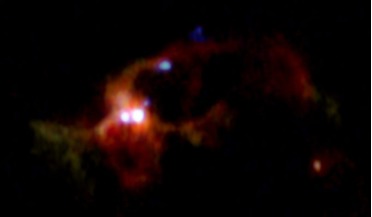 25 September 2020
Salty water vapour provides clues to massive star formation
25 September 2020
Salty water vapour provides clues to massive star formation
... is turning out to have another more important use - a marker pointing the way to massive star formation. 9500 light-years away in the constellation Scorpius, astronomers using the Atacama Large Millimeter/submillimeter... Array (ALMA) have spotted a pair of massive stars growing in a swirling cloud of heated water vapour and sodium chloride molecules – a compound more commonly...
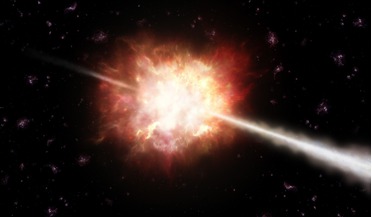 11 July 2016
Short gamma-ray burst is from a binary neutron star coalescing into a black hole say researchers
11 July 2016
Short gamma-ray burst is from a binary neutron star coalescing into a black hole say researchers
.... sGRBs are thought to be associated with the mergers of a black hole and a neutron star (BH-NS) or two neutron stars coalescing to form a black hole (NS-NS), therefore they are expected to be the EM counterparts for... gravitational wave events involving at least one neutron star. The research paper recently submitted by M. Enderli of the Dipartimento di Fisica, Sapienza Universit`a di Roma...
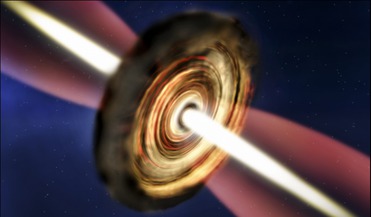 22 August 2016
Massive Young Star Discovered
22 August 2016
Massive Young Star Discovered
..., making them harder to catch when they are infants." Another reason why it's sometimes hard to observe a young star is that they are typically surrounded by a thick cloud of gas and dust. In this study, researchers used ... long wavelengths used by these arrays allowed astronomers to peek into the opaque cloud surrounded the young star. Astronomers where also able to determine the presence of a “Keplerian” disc that rotates more quickly at its ...
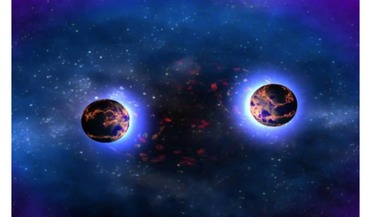 05 October 2016
Neutron star natal kicks could be the catalyst for binary formation and new gravitational wave sources
05 October 2016
Neutron star natal kicks could be the catalyst for binary formation and new gravitational wave sources
... a new type of promptly appearing eLISA gravitational wave (GW) source, say researchers. Neutron stars are created when stars with an initial mass of eight solar masses or more undergo core collapse. During this... neutrons and the energy involved in such a process results in a supernova explosion. Some neutron stars turn into rapidly rotating stars that emit regular pulses of radio waves (and other types of electromagnetic radiation) at rates of...
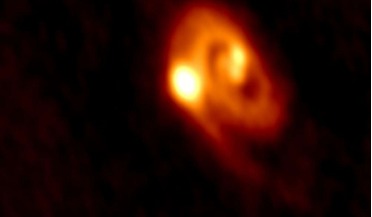 27 October 2016
Rare newly forming triple star system observed by astronomers
27 October 2016
Rare newly forming triple star system observed by astronomers
... of a mystery, although fragmentation of the gaseous disk in which they form is considered a main driving force. Stars initially form from a cloud of interstellar gas that is collapsing under its own gravity and, in a process that... astronomical units), provide direct observational support for the two dominant theoretical models for binary/multiple star formation.” The two main theories that Tobin refers to are either small scale fragmentation of ...